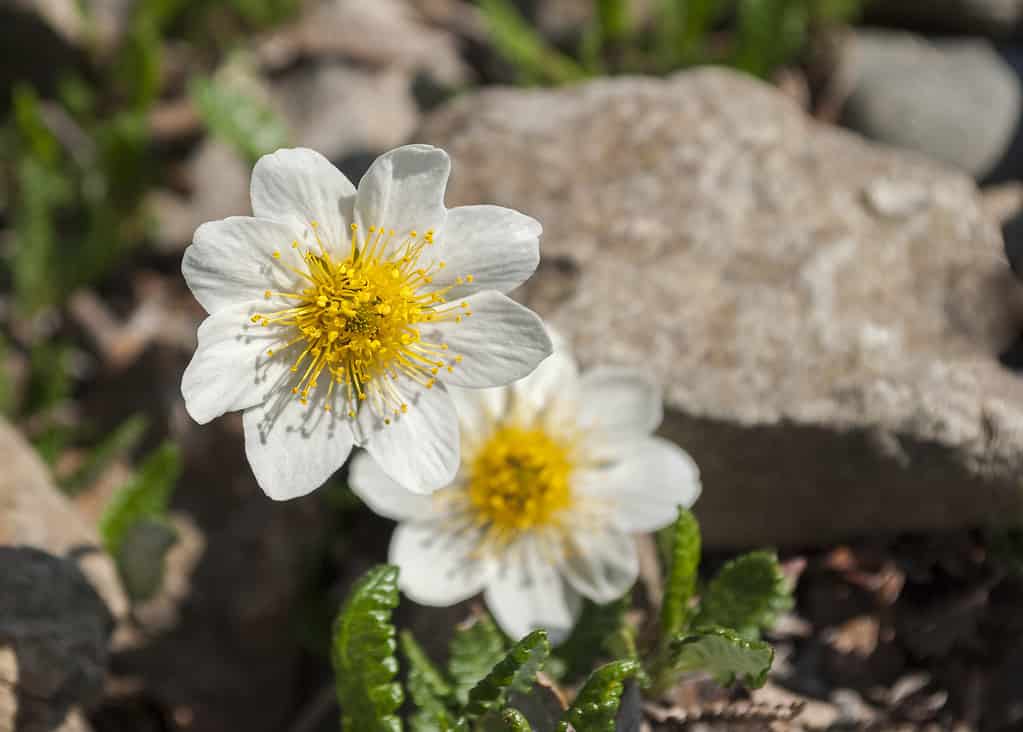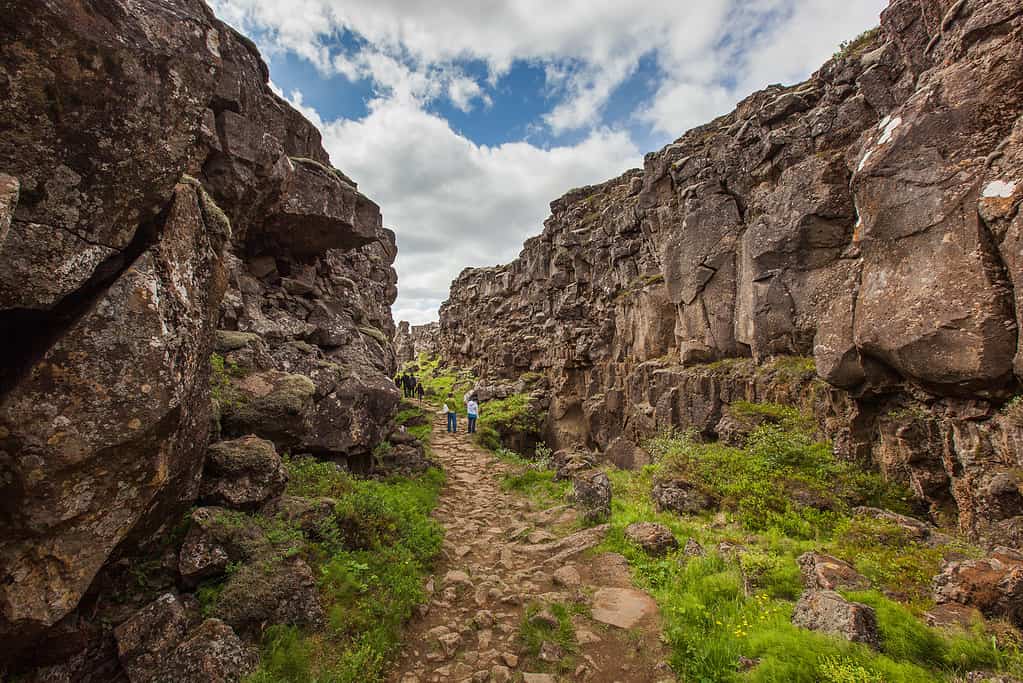Located in Northern Europe, the Republic of Iceland is known for being a gorgeous gem in the region. Many people know Iceland thanks to the famous Blue Lagoon, where travelers and locals head to the geothermal spa to unwind and restore themselves. However, Iceland is also known for being a great spot to view the Northern Lights. Travelers from around the world head to Iceland between September and April to view aurora borealis. The overall ecosystem and landscape of the country are gorgeous and quite diverse. However, that also means that there is one special and unique flower that has the honor of being the national flower of Iceland: mountain avens.
Read on if you’re interested in discovering the key characteristics of mountain avens, where it grows, and why it was chosen to be Iceland’s national flower. So let’s learn about mountain avens and what makes it unique!
The Geographic Context for Iceland’s National Flower

Many people from all over the world travel to Iceland to view the Northern Lights.
©Thampitakkull Jakkree/Shutterstock.com
Iceland is an island located in the Atlantic Ocean with 40,000 square miles of surface area. The island is the second largest in Europe, following Great Britain. Iceland has a particularly distinctive climate and geography due to its unique location. It has a very changeable climate because the warm air from the Gulf Stream and the cold winds from the North Pole mix together here. This means that there are often sudden weather changes, and the island is usually cloudy with strong winds.
The terrain is an interesting mixture of glaciers, volcanoes covered in snow, lava fields, and tons of uninhabited lands where nature is permitted to grow freely. Since it is an island, there is tons of coastline with some of the most beautiful beaches in the world. There is a commonly held myth that Iceland is devoid of trees. However, that couldn’t be farther from the truth. You’ll find lots of plant life here, including several tree species, plants, and flowers. However, the plants must be resilient to survive, and that’s how the gorgeous mountain avens have survived in this changeable climate.
So let’s learn more about the national flower of Iceland and what makes it so special!
Mountain Avens: The National Flower of Iceland

The holtasóley, also known as mountain avens, is a member of the Rosacea family.
©iStock.com/Michel VIARD
Holtasóley, also known as the mountain avens, is the national flower of Iceland. It was voted the National Flower of Iceland back in 2004 by the public. This gorgeous flower is white in color and has a distinct yellow center. Although they are members of the Rosacea family (which many will be familiar with thanks to the beauty of the rose), they are actually quite different from the other family members. Although other members of the family sport five petals typically, mountain avens actually have eight petals. Sometimes they have even been noted to have up to 16 petals.
This flower is most often found growing in dry, alpine regions. It is actually well acclimated to living in cold regions, making sense that it thrives in Iceland. Since they can grow in such harsh climates, they are often not negatively impacted by hikers, travelers, or even urban development. This is a “tough” little flower that can withstand a lot. Next, let’s explore where these flowers grow in Iceland.
Where Do Mountain Avens Grow in Iceland?
As the national flower of Iceland, it may not surprise you that mountain avens can be found throughout the country. Although they grow all around the country, they are found in greater numbers in the moorlands and in the mountainous regions. In fact, they earned their name because they are often found growing on mountainous rocky areas and in gravel. The plant is also known as ptarmigans leaf in Iceland. This is because the rock ptarmigan, which is a medium-sized bird found in Iceland, enjoys eating the leaves of these flowers.
Now that we better understand this flower in the context of Iceland’s geography, let’s continue to learn more. Let’s discuss the cultural significance of the flower and the ways it has been used in the country.
What Is the Cultural Significance of Mountain Avens?

Mountain avens have been used for medicinal purposes, such as herbal tea.
©iStock.com/SusanSerna
Let’s start off by explaining the most common use of mountain avens. The flowers have primarily been grown for their use as an herbal remedy and for medicinal properties. It is often brewed to help with digestive issues. Holtasóley was also originally thought to help bring down inflammation and has been used as an astringent as well. In addition, the flower leaves can be dried and used as a substitute for tobacco use. The flowers are also grown simply for ornamental reasons. This is because, as a member of the Rosacea family, they are beautiful to look at.
It is especially interesting to note that Dryas octopetala, the scientific name for mountain avens, inspired scientists in a fascinating way. The Oldest Dryas, Older Drayas, and Younger Dryas are all actually named after this flower. This is because of the large amounts of its pollen found in the cores of the earth. It is also interesting to note some of the folklore associated with the flower. There was once a time when these beautiful flowers were actually called ‘Thief’s Roots.’ This is because locals noticed that the flowers would grow in great bunches in areas where people were hanged for stealing.
Additionally, there were also old legends that spoke of the flower’s ability to help you grow rich.
It was foretold that if you stole money from a poor widow and buried it underneath mountain avens, you would double the amount of money you initially buried there.
How to Grow Mountain Avens

The national flower of Iceland thrives in alpine climates.
©MattMakesPhotos/Shutterstock.com
If you happen to have fallen in love with this elegant flower after learning so much about it — we can’t blame you. With its beautiful white and yellow coloring and resilient ‘personality’, this flower is definitely unique in more ways than one. You may be wondering how you can grow your own. Well, it is important to note that mountain avens can be grown in your home garden but require a specific climate. As we stated above, they thrive in a cool, alpine climate. If you happen to live in a mountainous region that is known for its cold seasons, then you shouldn’t have a problem growing them. However, if you live in a warm, humid climate, they most likely won’t be able to handle the heat.
If you want to grow them yourself, then it is important to use gritty alkaline soil that drains well. They also require a lot of sunlight — they will not do well in the shade. Additionally, their seeds need stratification. Once you pre-treat the seeds, you should immediately plant them inside a pot. Then place them in a closed-off outdoor location. The seeds should begin to sprout anywhere from a month to a year. How quickly it happens depends on the conditions they are in and the time of year.
Other Native Plants and Flowers of Iceland
Today, the people of Iceland are incredibly respectful of their country and its natural habitat and flora. In the past, human settlement caused a lot of the natural flora to become disrupted. This negatively impacted the native land. This is why locals do their best to leave the flora alone today. Thanks to this, there are many other beautiful native plants and flowers you can still find in Iceland. A great example of this is the moss-covered lava fields. Since it covers so much of the country, it can be tempting to want to touch and interact with the moss. However, it is very sensitive, and simply walking on it can cause much damage. The moss is a beauty that you must admire from afar.
Additionally, another beautiful flower that you’ll find is meadow buttercups. These gorgeous yellow flowers grow in meadows and other low-lying areas. They tend to be in bloom from May up until July.
The photo featured at the top of this post is © iStock.com/MoKa
Thank you for reading! Have some feedback for us? Contact the AZ Animals editorial team.






